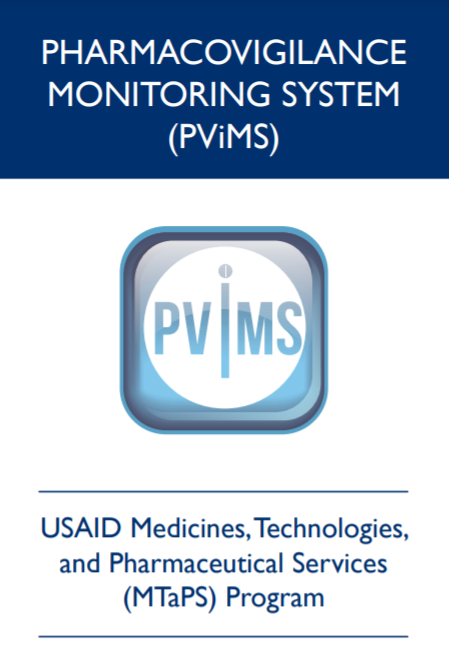
View the original resource on the Medicines, Technologies, and Pharmaceutical Services (MTaPS) Program website.
An integrated approach to monitoring the safety of medicines that includes both active surveillance and spontaneous reporting is essential to a well-functioning pharmaceutical sector. Active surveillance is particularly important to support the introduction of new essential medicines in low- and middle-income countries (LMICs), where regulatory systems are often still developing and need support. In such resource-limited settings, active surveillance can help determine the real-life frequency, risk factors, and impact of clinically significant adverse drug events on treatment outcomes.
What is PViMS?
The PharmacoVigilance Monitoring System (PViMS) is a web-based application used by clinicians, regulatory bodies, and implementing partners to monitor the safety of medicines. PViMS enables the implementation of active surveillance activities in LMICs by addressing the entire data collection, data analysis, and reporting process. This allows decision makers to identify potential adverse events related to medicine use and implement decisions for improving patient safety. When used for both active monitoring and spontaneous reporting, PViMS provides a comprehensive pharmacovigilance solution for LMICs. PViMS was developed by the USAID-funded Systems for Improved Access to Pharmaceuticals and Services (SIAPS) Program, implemented by Management Sciences for Health (MSH).
Features
- Comprehensive documentation: Adverse event logging can include clinical stage, concomitant medications, test results, co-morbid conditions, treatment regimen, treatment initiation date, and adherence to treatment.
- Standardized terminology: Users enter the common terms or choose from precoded causality assessment lists and scales such as MedDRA©, the National Cancer Institute Common Terminology Criteria for Adverse Events, WHO, and Naranjo; eventually users can develop a local dictionary using standard terms.
- Provides for detailed description of adverse event (AE) outcome and generating signals: Description of AEs, severity and seriousness, laboratory values, AE outcome, and AE management; can be used to generate signals of increased incidence to inform action or be further evaluated.
- Interoperable with third-party clinical systems and statistical tools: Can import and export data from third-party electronic medical record or dispensing tools in XML, CSV, and Excel; analyses can be cross-checked by analyzing data in previously validated statistical tools. PViMS can export individual case safety data reports in E2B format and is health level 7 (HL7) compliant.
- Computes basic active surveillance metrics: Generates key metrics for cohort event monitoring, including incidence rates for exposed and nonexposed patient groups and adjusted/unadjusted risk ratios per AE/medication.
- Customized reports and frequency tables: Can be generated by users.
- Customizable data fields and auditability: Can assign and restrict user access, enabling tracking of changes.
Additional information can be found in the following brochure. For any questions on PViMS, please contact info@mtapsprogram.org.